portable grazing pen
This guide will walk you through how to set up a portable grazing pen that you can use when raising your goats. Having a way to move your herd around the pasture is a great way to encourage a healthier and hardier herd.
Incorporate this goat fence ideas so you can raise a herd of dairy goats that are hardy and healthy, giving you top-quality milk every day.
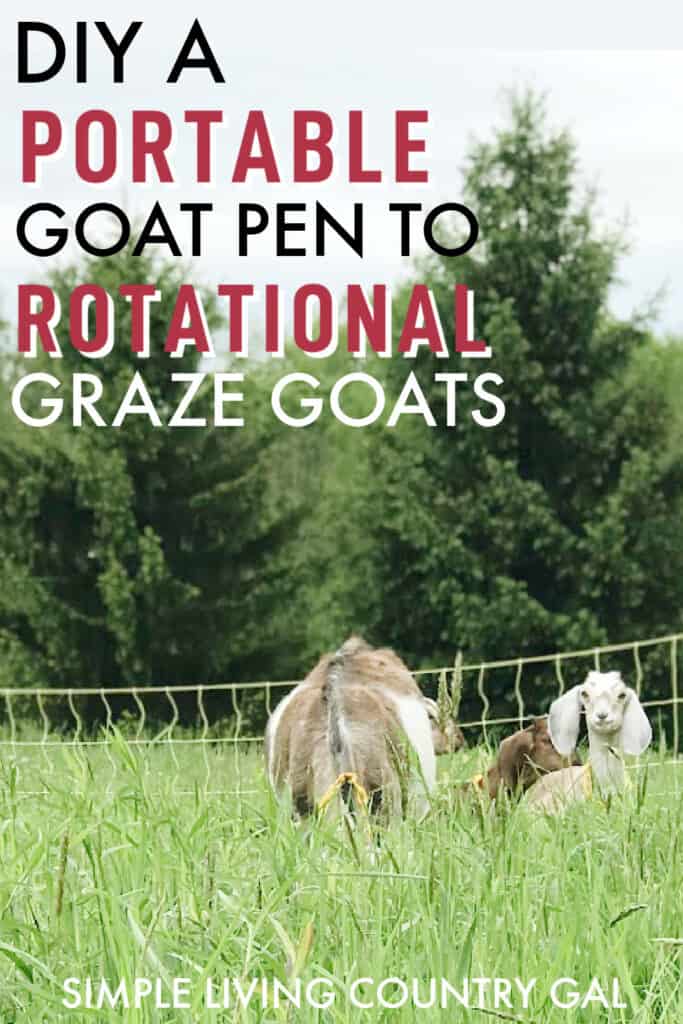
Rotational grazing is relatively new and effective technique used by homesteaders to raise healthier livestock and pastures. If you raise goats, then it can be incredibly helpful because goats tend to be more suseptable to parasite and rotational grazing can greatly reduce outbreaks.
By rotating your goats through different sections of your pasture, you can minimize parasite loads and allow your grass to recover more quickly, giving you a more nutrient-dense grazing area. Moving a herd around can be a bit intimidating, so this guide is designed to walk you through the steps in a straightforward way. As a midlife goat owner, finding workarounds for big jobs is my goal, so you can incorporate my tips no matter what phase of life you are in.
Setting Up Portable Grazing Pens
Portable grazing pens are small paddocks you can set up inside a larger area. They allow you to move the herd around routinely, keeping the entire pasture healthy overall.
Why Portable Pens Work Well for Rotational Grazing
The beauty of portable grazing pens is their ease of moving around. They enable you to confine your goats to a specific area for a set time, preventing overgrazing and too much manure where your goats are eating.
The best pens can be easily moved, preferably alone, but with little help if needed. This method encourages efficient land use and ensures that your goats are always on fresh grazing grounds.
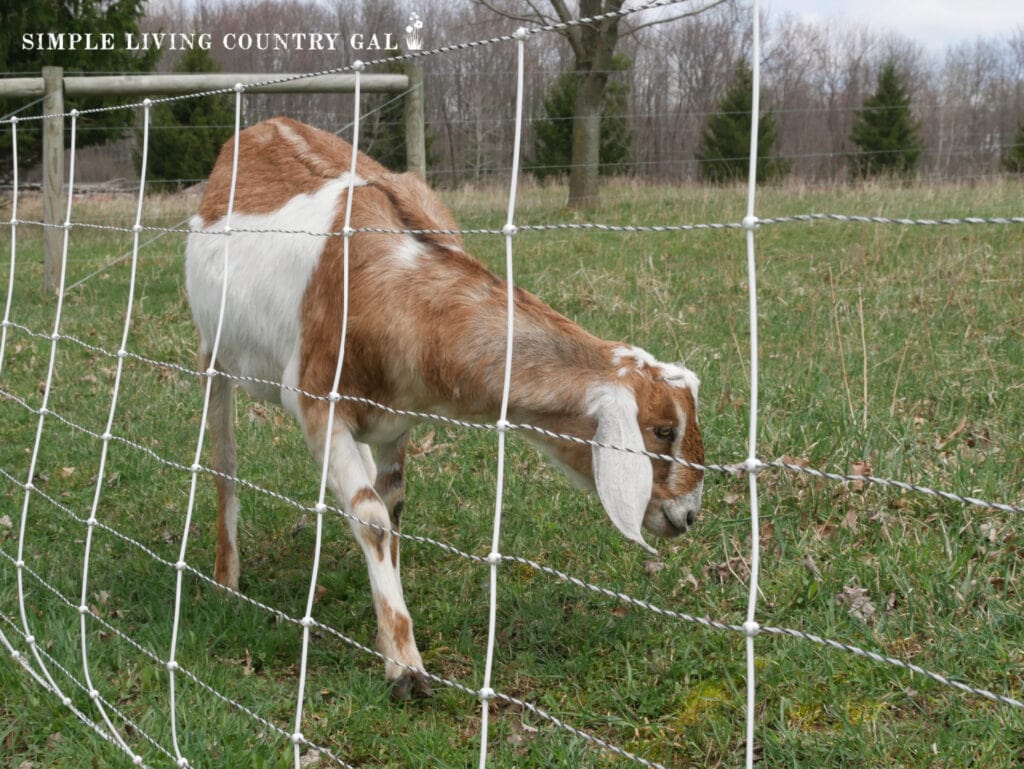
How much grazing room do you need per goat?
If you keep your goats in one place all the time, you will want a larger area for them to graze in. With rotational grazing, you will move them when the grass is eaten down to a certain height, around 6-8 inches. The reason for this length is that worm eggs tend to be lower, around four inches.
Another thing to keep in mind is timing. Larvae usually take about five days to go from egg to where they can infest a goat. This is another great tip to keep in mind for when to move your herd to the next paddock.
How to DIY Portable Grazing Pens for Goats
Creating your own portable grazing pens can be a cost-effective way to manage your grazing system. For rotating, I prefer to use fencing netting because it is easy for me to move on my own, and the goats know to stay away from the fence, which significantly limits anyone getting out and possibly into trouble.
- Gather Materials: You’ll need a roll of electric netting for every 3-6 goats. The size will vary depending on how quickly your goats eat down the grass. You will also need a solar energizer to electrify the fence.
- Select a Location: The size and shape of your pens will depend on the terrain and the number of goats you have. Using netting gives you the freedom to move around obstacles more easily.
- Construct the Pens: Unroll the fence gently to prevent tangles. As you come to the stake, insert it into the ground. At first, the fence will be slack, but you can go back and tighten things up once the fence is completely unrolled and in place.
- Set the System Up: Connect the fencing to the energizer and ensure it’s functioning properly. Safety is key; make sure all family members who will be near the fence know how to behave around it.
- Let the herd out: If you have trained your herd well, they will respect the fence no matter where it is. I still suggest watching everyone for a bit to ensure they do not get into any trouble.
If you need a larger area, you can connect netting rolls together. One energizer will power quite a large number of fence rolls. Be sure to check the instructions to see what the limitations are.
Petween Electric Fence Netting for Sheep, Lambs, Goats, Dogs, 35


Implementing Rotational Grazing
Once you have a system in place for moving your fence, you can then begin planning out how often to move your herd.
Planning the Rotation Schedule
An effective rotation schedule requires you to divide your pasture into several sections and then graze each area for a specific number of days before moving your goats to the next area. The key is allowing enough time between moves for the grazed areas to regrow.
Plan your rotation by:
- Determining the number of paddocks needed based on pasture size and goat numbers.
- Assigning a rest period for each paddock, typically several weeks, depending on the weather where you live and how long it takes for the grass to grow.
- Adapting your schedule according to the time of year, as regrowth may vary with the season.
- Keeping a log of rotation dates and observing the effects on pasture health and goat performance.
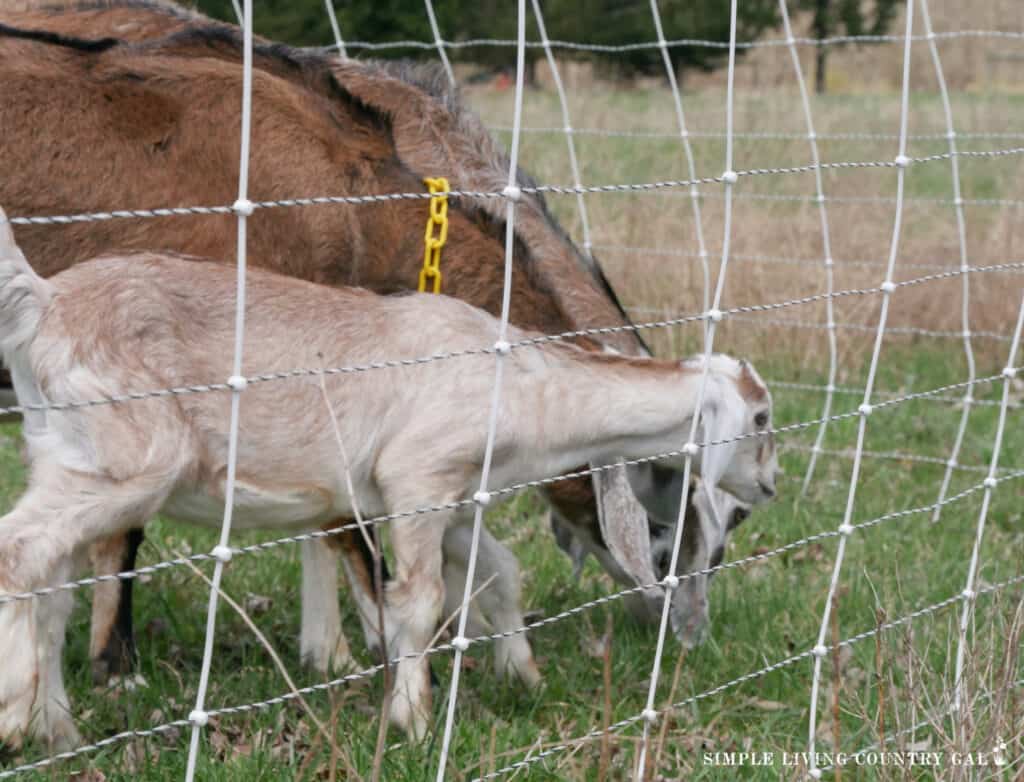
Rotating Goats Through Different Grazing Areas
When it’s time to rotate, move your herd to the new grazing paddock. You will want to watch for signs of overgrazing. This can happen if you have goats that prefer certain plants or grasses so they tend to eat those areas down first. If you notice this, adjust your rotation to allow more recovery time.
Tips for more successful rotations:
- Watch your herd once moved to ensure they respect the new boundaries.
- Look at the new area to determine if there is enough forage before transferring goats.
- Providing minerals and other supplements as needed, especially in areas where certain nutrients may be lacking.
- Do your best to be consistent with your timing, as goats are creatures of habit and adjust well to routines.
Monitoring Grazing Patterns and Pasture Health
Regularly monitor your pastures and goats to ensure your rotation system is working smoothly. Watch for signs of pastures in distress, such as bare patches and adapt your rotation schedule to prevent these issues.
Keep an eye on your goats for:
- Signs of malnourishment or weight loss, suggesting that forage is insufficient or poor quality.
- Increased parasitic infections, which may indicate a need for a more aggressive rotation or alternative parasite management strategies.
- Any changes in behavior that could indicate stress or health problems related to the grazing regimen.
Managing Parasites and Pasture Health
The primary purpose for incorporating rotational grazing is to keep parasite outbreaks to a minimum. Let’s talk about things to watch for so you can catch issues before they get out of hand.
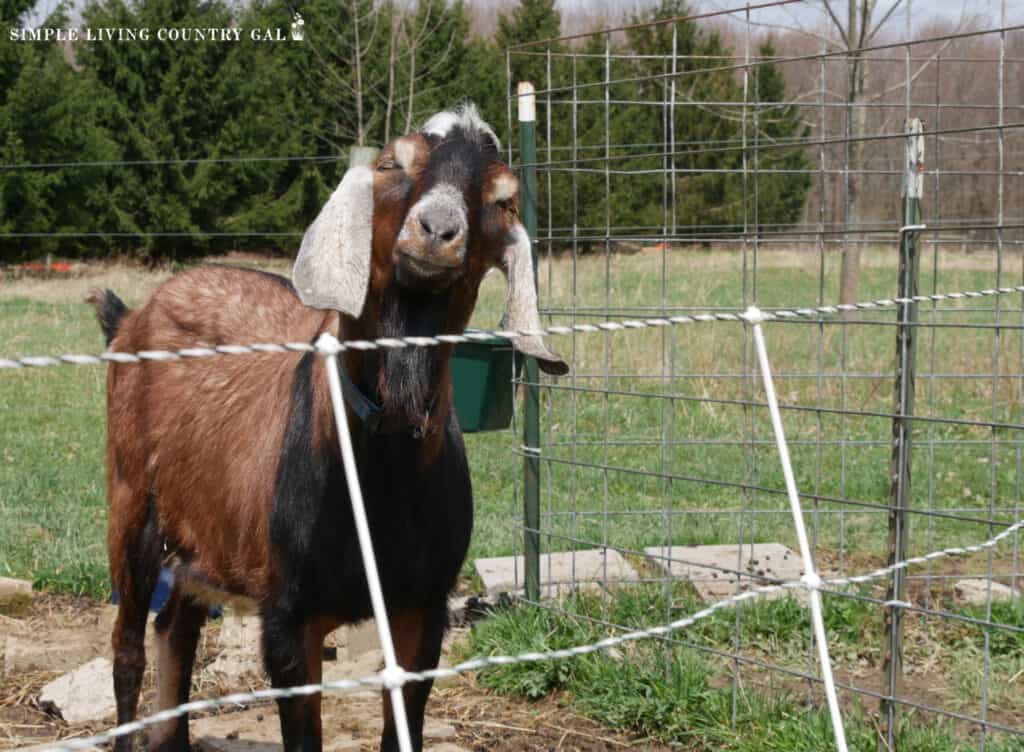
Benefits of Minimizing Parasites Through Rotational Grazing
Rotational grazing can significantly reduce the parasite load on your farm by breaking the parasite lifecycle. Because goats have a complex grazing behavior, moving them to new areas disrupts the hatching of parasite eggs.
Tips to use for a healthier herd:
- Utilizing clean grazing as much as possible.
- Rotating pastures in dry, sunny weather, which can naturally reduce parasite numbers.
- If you have heavy worm issues, you can wait to put your goats on pasture after the morning dew has dried in the sun.
Tips for healthier pasture
You can incorporate a few additional tips to keep your pasture in top health.
- Reseeding during rest periods to introduce new and beneficial forages can really increase the quality of your pasture.
- Mowing or trampling forage back into the ground to add organic matter and nutrients to the soil.
- Resting paddocks longer if overgrazing or other stressors have occurred, allowing plants to recover fully.
Primal Freeze Dried Chicken Cat Treats, Made with Goat Milk The Goat Treats for Cats, 2 oz



Monitoring the Health of your Goats
Even with a rotational grazing program, regular health checks are essential for a healthy herd.
Disclaimer: In accordance with FDA guidelines, the information and products offered on this website are not intended to diagnose, treat, cure, or prevent any disease. I am not a medical professional. Before administering any medications to your animals please contact a veterinarian first.
- Signs of anemia, which could signal a high parasite load. Check the membrane around the eye to check for issues. You want a nice pink watermelon color.
- Changes in manure consistency or color could be related to diet, worms, or other health problems. Healthy poo resembles small balls. If you see clumping or runny manure, you will want to look into things further.
By staying proactive and attentive, you can ensure that your goats remain in top condition.
Bonus Tips
To ensure your herd is healthy, incorporate a few of these bonus tips.
Have Water Available
Having sources out where the herd can easily find them is important when grazing livestock. You can use a free-standing container, a fence line water bucket, or DIY a waterer using a tire.
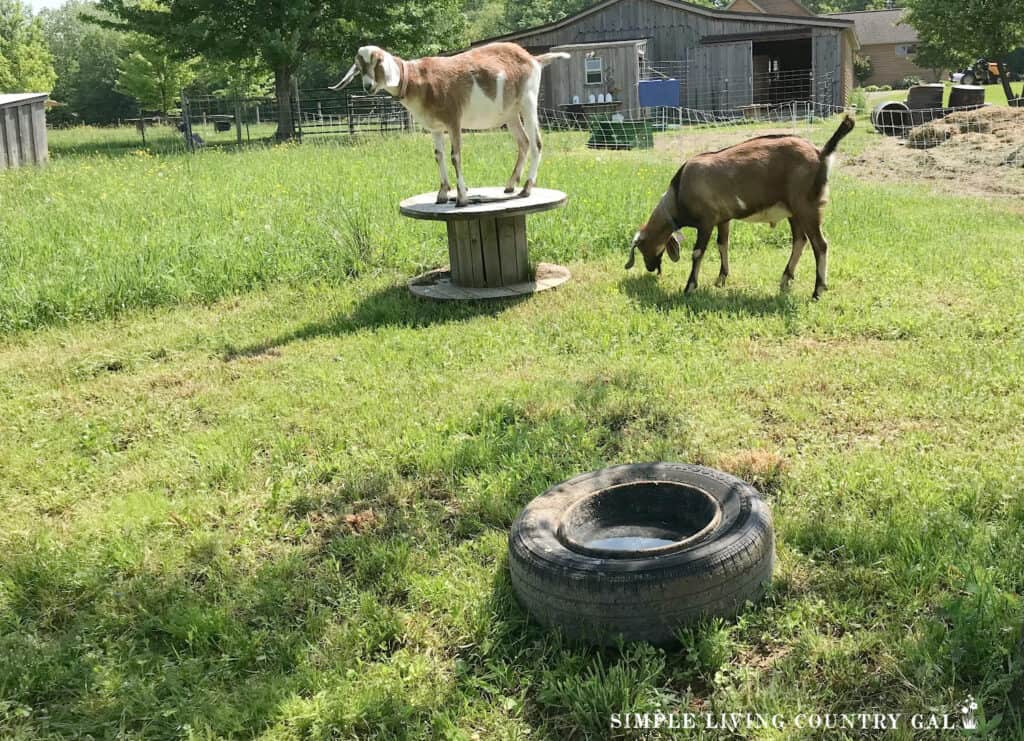
Training Goats on Fences
Fence training is an important part of preventing escapes and keeping your goats safe. Start by putting them in a small pen for a few hours a day with the electric fence turned on, gradually acclimating them to the sensation and the boundary’s noise.
Get my easy approach to training goats on electric fencing for more tips.
Adjusting the Grazing Schedule as Needed
Be flexible; unexpected weather or changes in pasture growth may require a change in your rotation. Always have backup plans and know the signs of when to alter the current routine or transition to a new one.
Adopting rotational grazing can not only lead to healthier goats but also help you raise a more robust pasture for your dairy goats. Yes, it takes a bit of planning and flexibility, but the benefits are totally worth it. By following this guide, you can set up a good rotational system that your goats will thrive on.









